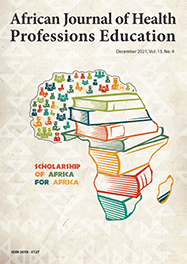South African Association of Health Educationalists (SAAHE) Distinguished Educator for 2012
Keynote address to SAAHE - Ensuring effective practice: Understanding who our students are
Faculty of Dentistry, University of the Western Cape
This presentation uses a literature review to examine the context of the conference theme – ‘From practise to practice’. It interrogates who our current cohort of students are and what this means for how they should be taught. The presentation is premised on the assumption that quality teaching and learning has the potential to develop skilled and competent health practitioners. Further, it assumes that effective learning depends on the appropriateness of the teaching, and that appropriate teaching is impossible without an understanding of who the learners are. To this end, the presentation commences with an examination of the current cohort of students – those who entered health sciences programmes in 2012. Thereafter, discussion turns to appropriate teaching strategies for these students.
The 2012 cohort are ‘Mandela’s children’, born in 1994, the year of South Africa’s democracy. International literature identifies them as the ‘Z-generation’ – those born into or growing up in a world of internet, computers, mobile phones and social networking. They are digital natives’, used to receiving information fast, enjoying parallel processes and multi-tasking, and preferring graphics to text. They function best when networked, thrive on instant gratification and frequent rewards, and prefer games to serious work.
This literature suggests further that the 1994 cohort are ‘bubble wrapped’ by over-managing parents. They have had little access to independent play, and their non-school time was scheduled for extra lessons and extramurals so as to ensure that they had a competitive edge on peers. They have been taught that everything is within reach and that self-belief is essential for success. As a consequence, other people’s opinions are rarely important. In competing to stay on top, they have few mechanisms for dealing with failure. Thus anxiety and depression are common. Yet, the literature is not conclusive. Further studies identify these young people as altruistic, and social and environmentally concerned and active. It emphasises their voluntarism and their motivation to serve.
Clearly, the 1994 cohort is diverse. The extent of this diversity is stark when the South African literature is reviewed. Only 5% of the 1990 birth cohort gained a university exemption. Many South African schools lack electricity or toilet facilities, and 92% of schools currently do not have functioning libraries. Few university students have access to all the digital devices characteristic of the Z-generation. Many do not have enough money for food and textbooks. Many, as a consequence, repeat academic years at university.
Any enterprise to support student learning from ‘practise’ to ‘practice’ must recognise this student diversity. The presentation goes on to outline the current literature on ‘personalised learning’, which manifests in the health sciences as ‘competency-based education’. It is argued that authentic competency-based education implies an individualised curriculum, but acknowledges that class sizes prevent such an approach. Strategies to individualise learning, within the real constraints of the clinical context, are outlined. Suggestions are made for pre-clinical consultations, negotiated personalised outcomes for clinical sessions, student self-reflection, and post-clinic feedback. The presentation concludes with suggestions for further reading.
AJHPE 2012;4(1):3. DOI:10.7196/AJHPE.174
Professor Wendy McMilllan
Article Views
Full text views: 6551




.jpg)
Comments on this article
*Read our policy for posting comments here